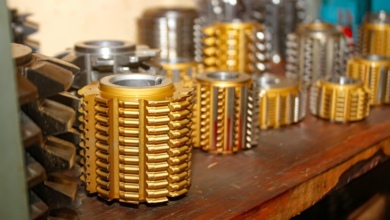
The Brief and Only Business Startup Checklist You’ll Ever Need
It’s estimated that there are 582 million entrepreneurs in the world, and 31 million are located in the US. As more of us get sick of the 9-to-5 grind, there’s been an increase in people striking out on their own.
If you’re feeling like you’re at a dead-end job and you can do better as your own boss, then you might be thinking of starting your own business. But it can be hard to determine what steps to take.
Here’s a business startup checklist you’ll need for success.
Table of Contents
Create a Business Plan
You probably already have an idea of what you want to do and even what to name your business. But you need to go beyond the fun stuff and create a business plan.
This might seem like a tedious thing to do, but it’ll be a lifesaver. Not only will it help set goals, but it’ll also help you get funding if you need it.
Think About Your Finances
Initially, you’ll need a large sum of money to get your business started. Not only that, but you’ll also need enough saved up to last you a year or so while you build up business.
Most entrepreneurs don’t have enough capital on their own, so they usually take out loans. This is where your business plan comes in handy; a well-written one will convince lenders to give you money!
Set Up Your Business
Next, you’ll need to decide what kind of legal structure is suitable for your business.
Choose from a sole proprietorship, partnership, limited liability company (LLC), corporation, or S-corporation. Each has its own pros and cons, so consult with a professional to determine which one’s best.
Get Your FEIN
You’ll need a Federal Employer Identification Number (FEIN) from the IRS. This allows you to use your FEIN instead of your Social Security Number when applying for things like a bank account or doing payroll.
With a FEIN, you can open a business bank account so you can keep your company’s finances separate from your personal account. Follow this link for more information.
Get the Appropriate Business Licenses
Depending on what type of business you’re opening and where you’re located, you’ll need at least 1 business license.
Check with the Small Business Administration (SBA) to see which ones you need. Then apply promptly so you can get up and running ASAP.
Get a Lease
If you’re operating a brick-and-mortar business, you’ll need to rent out a space.
After finding one with a commercial realtor, you can then set up the utilities, put in office furniture equipment, and more. Then you’re ready to open!
Use This Business Startup Checklist to Succeed
With this business startup checklist, you’ll be able to quit your boring job and become your own boss!
As a small business owner, it’ll be tough going at first. But once you see things take off, you’ll have a fulfilling company you can be proud of! Plus, you can pursue your true passion, so it’ll be a win-win situation.
For more advice on business ownership, why don’t you take a look at the rest of our blog page?








